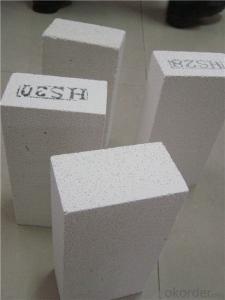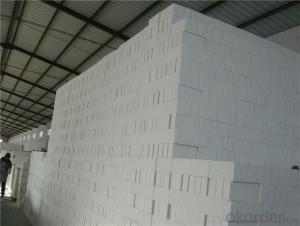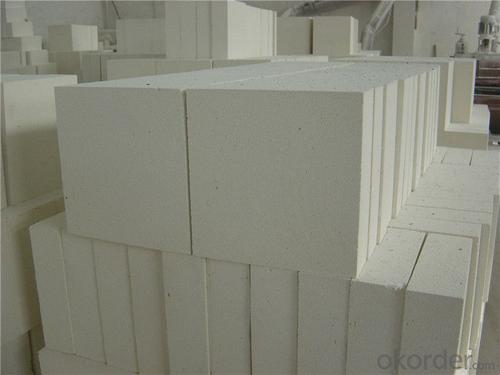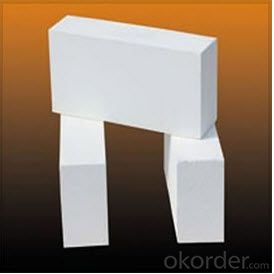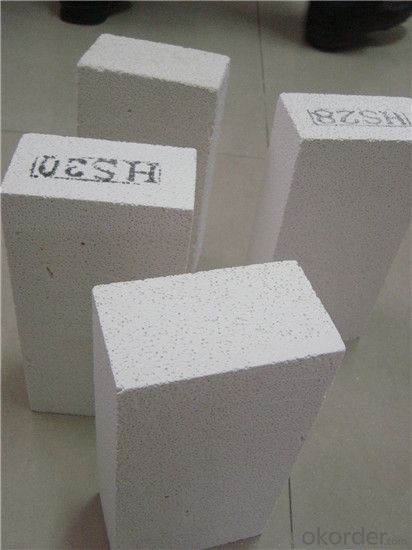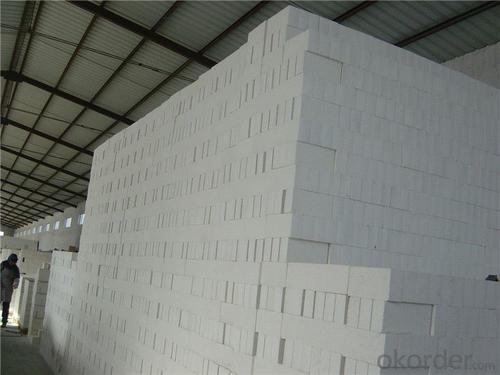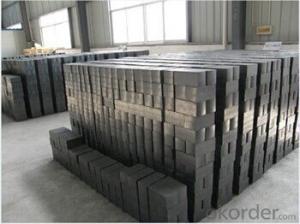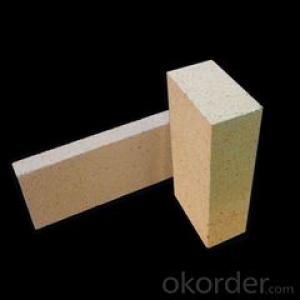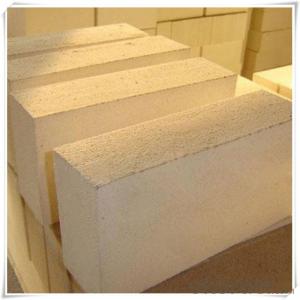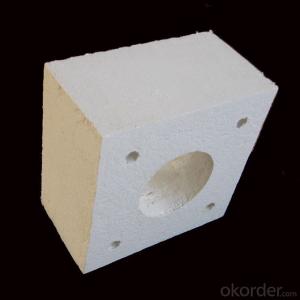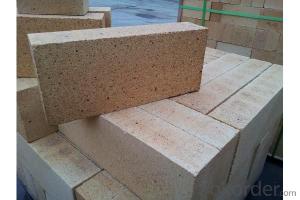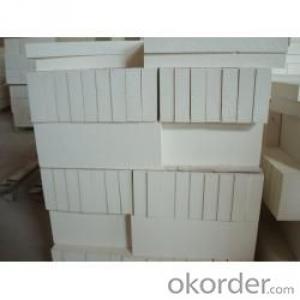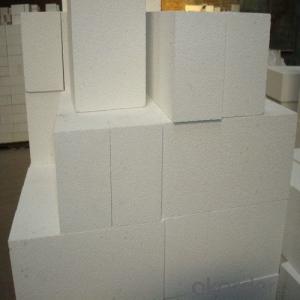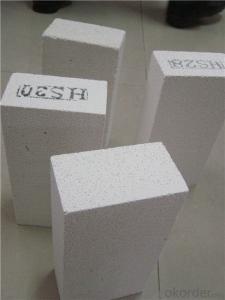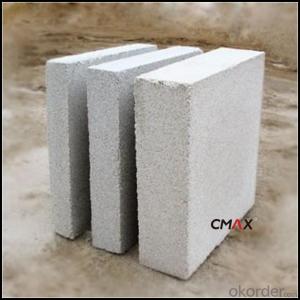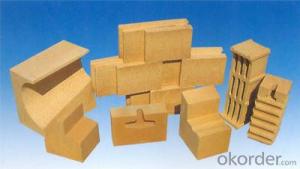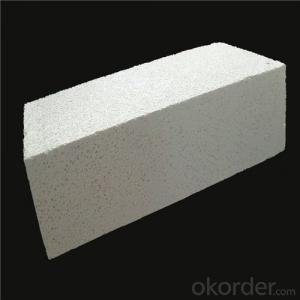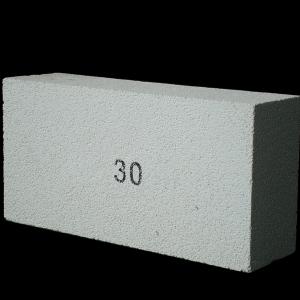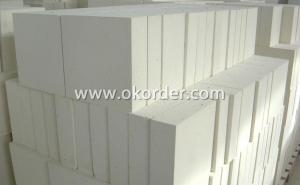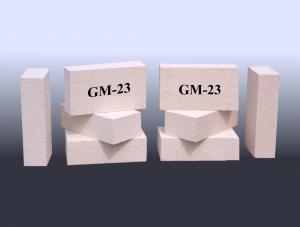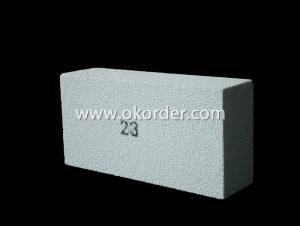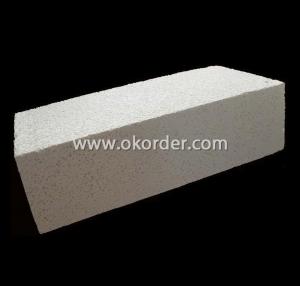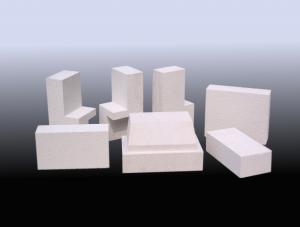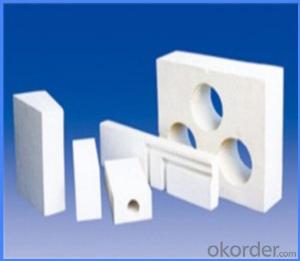High Temperature Insulating Fire Brick for Blast Furnace
- Loading Port:
- Shanghai
- Payment Terms:
- TT OR LC
- Min Order Qty:
- 1 m.t.
- Supply Capability:
- 1000 m.t./month
OKorder Service Pledge
OKorder Financial Service
You Might Also Like
Thermal Insulation Fire Clay Brick
Refractory brick is a block of refractory ceramic material used in lining furnaces, kilns, fireboxes, and fireplaces.
We provide high quality Refractory Fire Bricks that are used on wide range in the various industries like Cement, Glass and Steel. Refractory Fire Bricks are provided as per the quantity and specifications required by the customers. We provide an extensive range of Refractory Fire Bricks at reasonable prices that depend upon the quantity ordered.
Application
Insulating Fire Brick are used for the lining of converter, alternating current arc furnace, direct Current arc furnace and the ladle slag line, etc.
Company Advantage
(1)Long Insulating Fire Brick manufacture history: 25 years manufacturer
(2)Advanced equipment
(3)Diversification of production standards: ISO ANSI FEPA JIS ASTM
(4)Flexible payment: T/T L/C D/P D/A
(5)Professional marketing team and after-sale service
Insulating Fire Brick main feature:
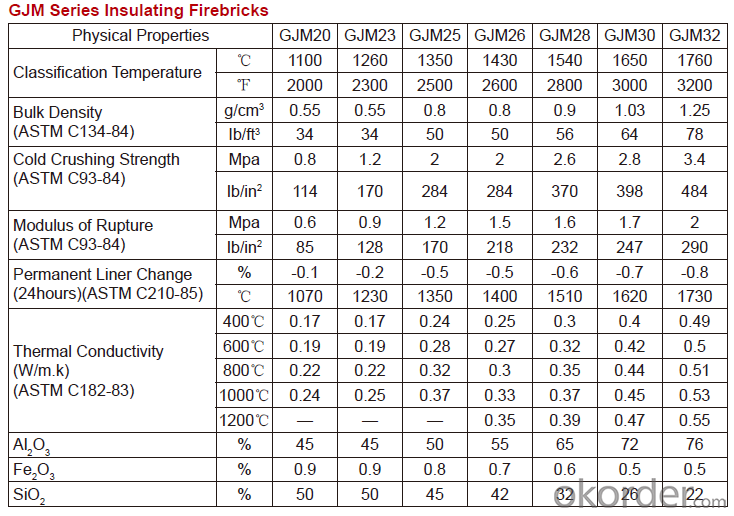
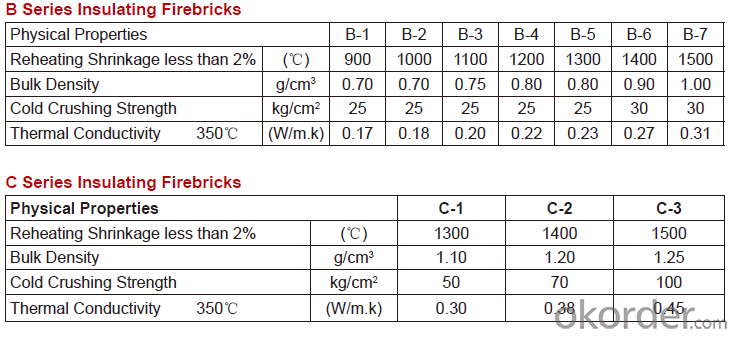
Equipment
1 unit of Ceramic Abrasive (SG Abrasive) pilot production line
2 units of Compact grain Abrasive pilot production lines
1 unit of high-end coated abrasives (abrasive cloth) production line
2 units of Boron Carbide production lines
3 large flexible crushing and sieving lines for grit production lines
6 units of 5000KVA-10000KVA dumping type electric arc furnaces for Brown Fused Alumina fusion
Q1 What’s the transport method?
A1 FCL delivery goods with wooden pallet or wooden case by sea; If LCL delivery, must with wooden case; Sometimes need open top, flat rack or bulk cargo.
Q2 What’s the required payment term?
A2 Generally 30% TT as the prepayment, 70% TT before delivery. If need, 100% Irrevocable Letter of Credit or negotiation.
Q3 Which country are our products exported to?
A3 Apart from entire Chinese market, the US, Russia, Japan, Korea, Australia and some Southeast Asian Nations.
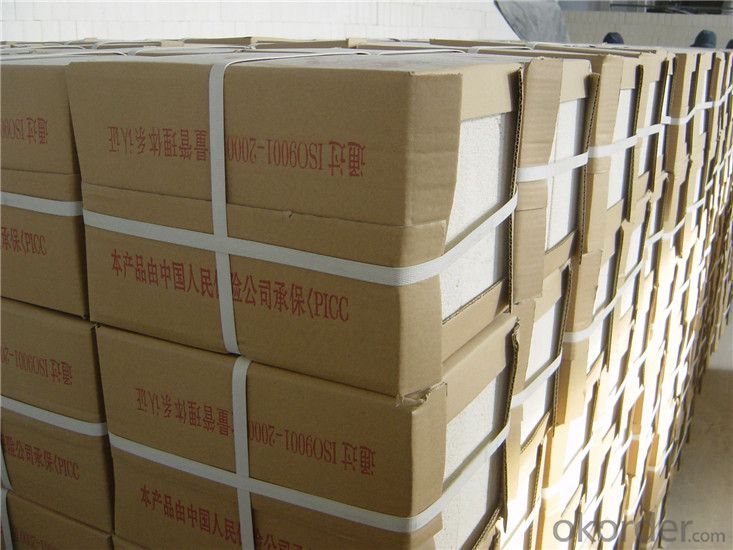
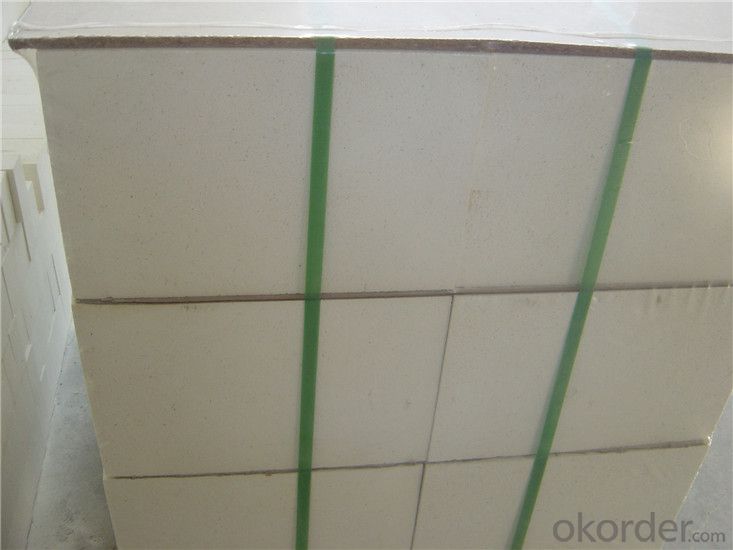
- Q: Can insulating fire bricks be used in the construction of thermal insulation roofs?
- Yes, insulating fire bricks can be used in the construction of thermal insulation roofs. Insulating fire bricks are specially designed to have high thermal insulation properties, making them an ideal choice for applications that require heat retention and energy efficiency. These bricks are made from lightweight materials such as clay, which have low thermal conductivity and high resistance to heat transfer. This allows them to effectively reduce heat loss or gain, making them suitable for use in thermal insulation roofs. Additionally, insulating fire bricks are durable and can withstand high temperatures, making them a reliable choice for long-term use in roofing applications.
- Q: Can insulating fire bricks be used for insulation in power generation plants?
- Yes, insulating fire bricks can be used for insulation in power generation plants. Insulating fire bricks are specially designed to have low thermal conductivity, making them ideal for applications that require high-temperature insulation. Power generation plants often operate at high temperatures and require efficient insulation to minimize heat loss and improve energy efficiency. Insulating fire bricks are made from lightweight materials such as clay, alumina, and silica, which have excellent insulating properties. These bricks can withstand high temperatures ranging from 1260°C to 1790°C (2300°F to 3250°F), depending on the specific composition and grade. This makes them suitable for the extreme heat conditions typically found in power generation plants. Furthermore, insulating fire bricks are resistant to thermal shock, which can occur when there are rapid temperature changes. This is particularly important in power generation plants where the heating and cooling processes can be frequent and intense. The ability of insulating fire bricks to withstand thermal shock helps to ensure the longevity of the insulation, reducing the need for frequent replacements and maintenance. In addition to their excellent thermal insulation properties, insulating fire bricks also offer other advantages. They are lightweight compared to traditional refractory bricks, making them easier to handle and install. This can save time and labor during construction or maintenance activities in power generation plants. Overall, insulating fire bricks are a reliable and effective choice for insulation in power generation plants. They provide high-temperature insulation, thermal shock resistance, and easy installation, making them an ideal solution for improving the energy efficiency and performance of power generation facilities.
- Q: What are the common sizes of insulating fire bricks?
- The common sizes of insulating fire bricks typically range from 9x4.5x2.5 inches to 9x4.5x3 inches.
- Q: Can insulating fire bricks be used in high-temperature insulation boards?
- Indeed, high-temperature insulation boards can utilize insulating fire bricks for their thermal insulation needs. These bricks are specifically engineered to endure extreme temperatures while offering exceptional thermal insulation. They find widespread use in various applications demanding insulation under elevated temperatures, including kilns, furnaces, and fireplaces. By incorporating insulating fire bricks into high-temperature insulation boards, one can effectively reduce heat loss and uphold a consistent temperature. Nevertheless, it is crucial to assess the particular prerequisites of the application and verify the compatibility of the insulating fire bricks with the insulation board material and installation technique.
- Q: Are insulating fire bricks suitable for insulation in power boilers?
- Yes, insulating fire bricks are suitable for insulation in power boilers. They have excellent thermal conductivity and can withstand high temperatures, making them effective in reducing heat loss and improving energy efficiency in power boilers. Additionally, their insulating properties help to maintain a consistent temperature within the boiler, enhancing its overall performance and reliability.
- Q: Can insulating fire bricks be used in ceramic kilns?
- Yes, insulating fire bricks can be used in ceramic kilns. Insulating fire bricks are designed to have low thermal conductivity, which means they are able to retain heat more effectively. This makes them an ideal choice for lining the walls of a kiln, as they help to conserve and distribute heat more evenly throughout the kiln chamber. Additionally, insulating fire bricks are lightweight and have a high resistance to thermal shock, which makes them durable and able to withstand the high temperatures typically reached in ceramic kilns.
- Q: Can insulating fire bricks be used in high-temperature ducts?
- High-temperature ducts can indeed utilize insulating fire bricks. These bricks are specifically engineered to endure extreme temperatures, making them an optimal option for situations where heat retention and insulation are pivotal. Through their low thermal conductivity and strong resistance to thermal shock, insulating fire bricks are able to effectively trap heat within the ducts, averting any energy loss and ensuring efficient heat transfer. Moreover, their lightweight composition facilitates easy installation and handling, while their durability enables them to withstand the demanding conditions of high-temperature environments. Ultimately, insulating fire bricks prove themselves as a dependable and efficacious solution for the insulation of high-temperature ducts.
- Q: Can insulating fire bricks be used in the construction of industrial furnaces?
- Indeed, the utilization of insulating fire bricks is viable in the creation of industrial furnaces. These bricks are specifically engineered to endure elevated temperatures and thermal shocks, rendering them suitable for deployment in furnaces operating at exceedingly high levels of heat. Their thermal conductivity is notably low, thereby reducing heat dissipation and enhancing the energy efficiency of the furnace. Moreover, these fire bricks exhibit a lightweight composition and are effortlessly maneuverable, thereby proving to be convenient for construction endeavors. In summary, the superb insulation capabilities and heat-resistant attributes of insulating fire bricks position them as an optimal selection for the construction of industrial furnaces.
- Q: Are insulating fire bricks suitable for commercial or industrial applications?
- Yes, insulating fire bricks are suitable for commercial and industrial applications. They are commonly used in high-temperature environments such as furnaces, kilns, and ovens, where they provide excellent insulation and heat resistance. Their ability to withstand extreme temperatures and thermal shock makes them ideal for commercial and industrial settings where heat containment and energy efficiency are crucial.
- Q: Are insulating fire bricks resistant to sulfates?
- Yes, insulating fire bricks are generally resistant to sulfates. They are designed to withstand high temperatures and are made from materials such as alumina and silica, which are known to have good chemical resistance. However, it is recommended to check the specific product specifications or consult with the manufacturer to ensure their suitability for sulfates in your specific application.
Send your message to us
High Temperature Insulating Fire Brick for Blast Furnace
- Loading Port:
- Shanghai
- Payment Terms:
- TT OR LC
- Min Order Qty:
- 1 m.t.
- Supply Capability:
- 1000 m.t./month
OKorder Service Pledge
OKorder Financial Service
Similar products
Hot products
Hot Searches
Related keywords


